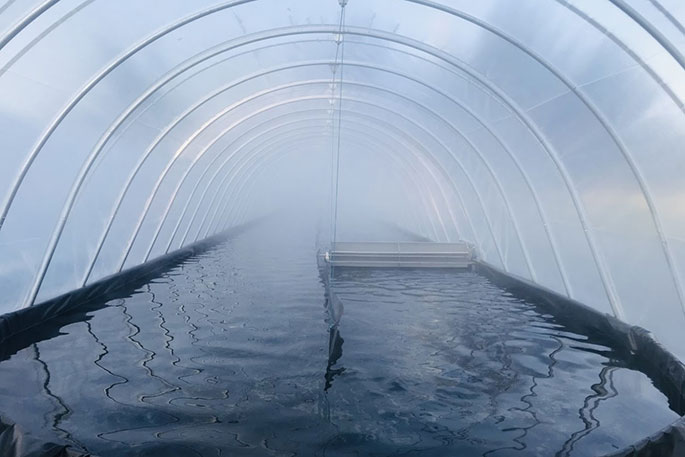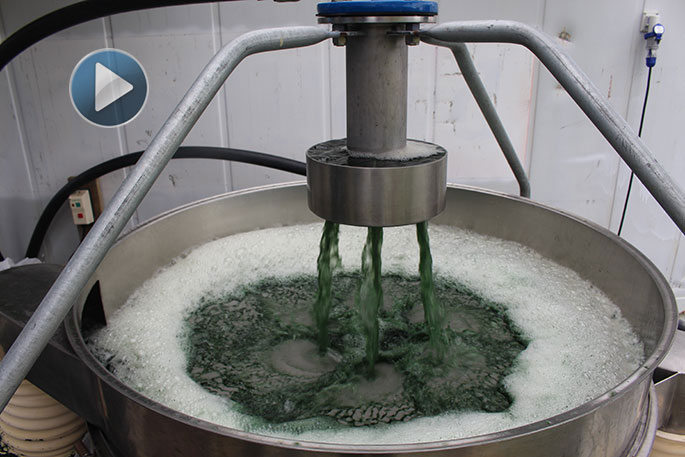Spirulina farming could form the backbone of a new primary industries sector worth more than $100 million a year – on the back of a significant investment by the Sustainable Food & Fibre Futures fund.
The Ministry for Primary Industries' SFF Futures fund and NZ Algae Innovations Ltd are co-investing more than half a million dollars to assess the viability of larger scale production of spirulina.
Spirulina is generally cultivated in ponds or natural lakes, harvested and dried. NZ Algae Innovations Ltd currently operates the only spirulina farm in New Zealand, under the Tahi Spirulina brand.
The farm is located in Himatangi, Manawatu, and has a 400 square metre area dedicated to growing spirulina in purpose-built shallow ponds.
The two-year project involves scaling production to test new growing and processing systems.
It is also researching the benefits and opportunities of growing spirulina to support the next steps towards full commercial-scale production.
'We recognise that spirulina is grown around the world and there are far larger overseas producers than us at the moment – our challenge is to find that sustainable point of difference that would make our spirulina a uniquely New Zealand product,” says Justin Hall, Director, NZ Algae Innovations Ltd.
'We want to understand what consumers are looking for, and whether taking spirulina in powder or capsule form is working for them.
'Our research so far has included looking at how to incorporate spirulina into a range of added value food products.
'We've already been experimenting with creating whole dried spirulina sprinkles, which taste nutty – a bit like nori [dried seaweed], with the intent of attracting new consumers.”
The project aims to establish a new business model so modular production units can be replicated in potential growing regions across New Zealand.

The climatic requirements of spirulina make it especially suitable for the growing regions of Nelson/Tasman, Hawke's Bay, Bay of Plenty and Northland.
'Market research shows that consumers, particularly in the northern and western hemispheres, are increasingly looking to add more plant-based protein in their diet and spirulina fits that trend nicely.”
The project seeks to build on the existing base of knowledge about spirulina production to grow a more nutritional product.
It will explore ways of maintaining more nutrient content in spirulina by developing different harvesting and processing methods using techniques from other industries.
By weight, spirulina comprises more than 60 per cent protein and is one of the world's most iron dense foods.
Tahi Spirulina production requires less water per unit of protein produced than most alternatives as the spirulina is grown in a contained system that minimises evaporation and prevents leaching.
'By growing spirulina in sheltered raceway ponds, we also eliminate contamination from bird faeces and other airborne contaminants that large-scale commercial production systems are vulnerable to," says Justin.
 NZ Algae Innovations Ltd director Justin Hall.
NZ Algae Innovations Ltd director Justin Hall.
Spirulina can be grown using most land types, providing the opportunity to improve returns on marginal land.
There is also potential for a spirulina sector in New Zealand to utilise waste streams from other primary industries as a source of nutrients for spirulina growth.
'Spirulina has a very low carbon and water footprint, so it checks the sustainability box as well.
'By creating a healthy product with a limited environmental footprint, a new spirulina sector for New Zealand has the potential to support both community and environmental wellbeing.”
Steve Penno, Director Investment Programmes at MPI, says establishing an algal protein sector could have considerable benefits for New Zealand.
'Spirulina farming has the potential to create exciting new employment and export opportunities for this country.
'It would also support the Government's ambition to be carbon neutral by 2050, by offering a new financially viable and sustainable land use option.”



0 comments
Leave a Comment
You must be logged in to make a comment.